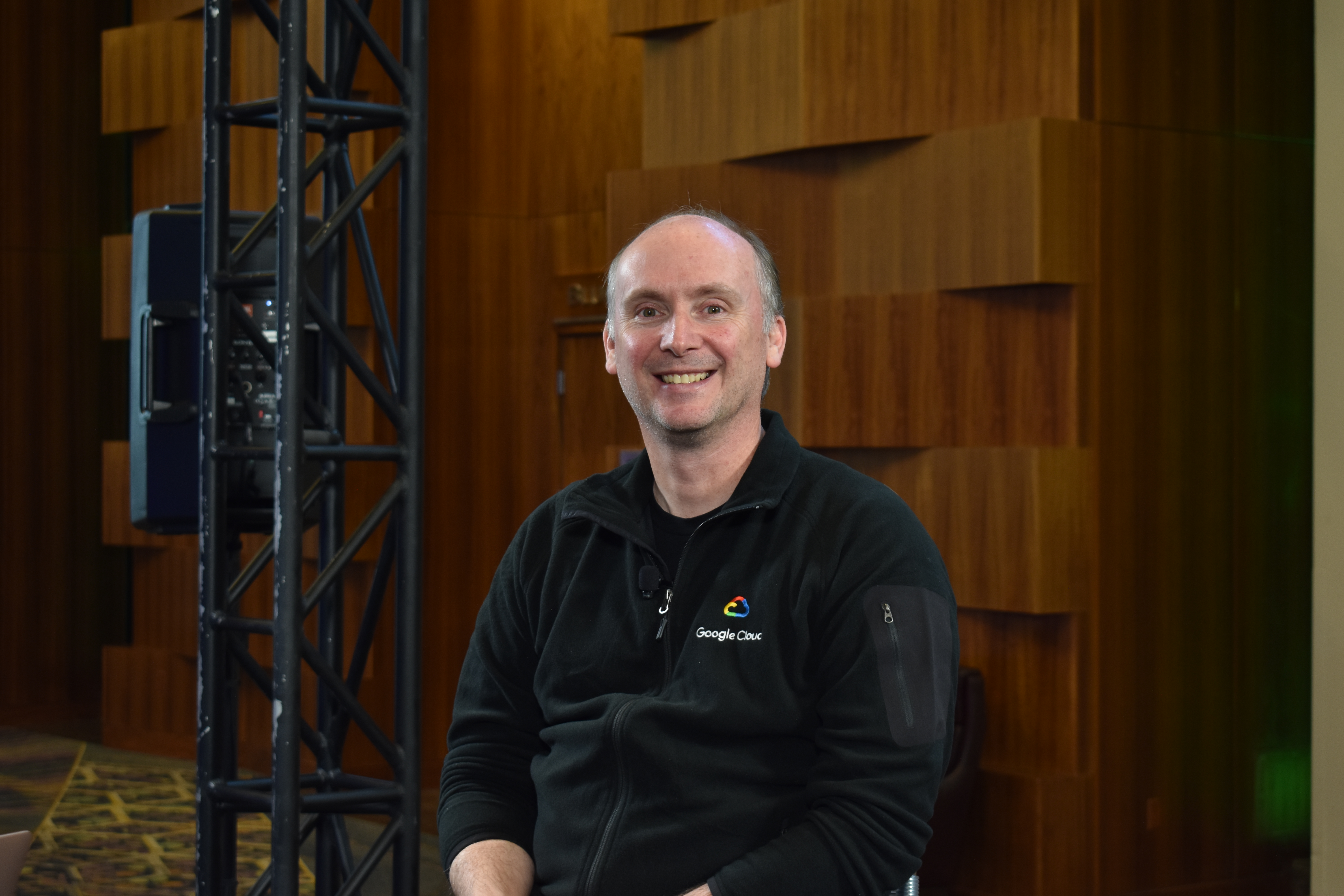 CLOUD
CLOUD
 CLOUD
CLOUD
 CLOUD
CLOUD
Amazon Web Services, Microsoft Azure and Alibaba Cloud consistently top the so-called “cloud war” rankings, because the common benchmark is infrastructure-as-a-service revenue.
That has created the perception that Google lags behind. But the company has a secret weapon in its cloud arsenal: Its cloud-based consumer services are already deployed at a larger scale than a Fortune 10 company needs.
“One of the things that some people know, but I think it’s probably underappreciated, is we use the same infrastructure for Google Cloud that is used for Google consumer products,” said Brian Schwarz (pictured), director of product management at Google Cloud. “So we just have this tremendous capability of infrastructure. We’re pretty good at storage, pretty good at compute, pretty good at networking. Obviously, a lot of that shines through on Google Cloud for enterprises to bring their applications, lift and shift and/or modernize, [and] build new stuff in the cloud with containers.”
Schwarz spoke with theCUBE industry analysts Dave Vellante and David Nicholson at VeeamON, during an exclusive broadcast on theCUBE, SiliconANGLE Media’s livestreaming studio. They discussed the strengths of Google Cloud for enterprise customers. (* Disclosure below.)
Why does Google’s infrastructure matter to a Google Cloud customer?
“If you just think about core infrastructure, networking, Google’s got one of the biggest networks in the world, obviously to service all these consumer applications,” Schwarz said. With speedy, dependable, secure data access in the “must have” column for any digital business, Google’s global local access points are a major selling point.
Consider the instant, reliable response consumers have come to expect from Google Search, Maps, Photos and Workspace, and then imagine the same performance for an enterprise’s applications. “That underlying substrate is the same substrate we have in Google Cloud,” Schwarz said.
Storage is Google Cloud’s other main competitive advantage. Customers have two main options depending on their business goals, according to Schwarz. First is a regional bucket where data is stored in multiple zones within a Google Cloud region. The second is a multiregion bucket, which is essentially a “continent-sized bucket,” Schwarz added.
To create this megabucket, Google stores multiple copies of a customer’s data in a set of the Google Cloud regions from around North America. This protects against regional outages and creates natural disaster recovery protection. The bucket has a single namespace, so applications don’t know a failover occurred, according to Schwarz.
For example, if an earthquake causes a West Coast region to fail, “you restart the app on the East Coast, same bucket name,” he said. “Read and write instantly out of the bucket. It’s in some senses a little bit of the nirvana of storage.”
Here’s the complete video interview, part of SiliconANGLE’s and theCUBE’s coverage of the VeeamON event:
(* Disclosure: TheCUBE is a paid media partner for the VeeamON event. Neither Google Cloud, the sponsor for theCUBE’s event coverage, nor other sponsors have editorial control over content on theCUBE or SiliconANGLE.)
THANK YOU